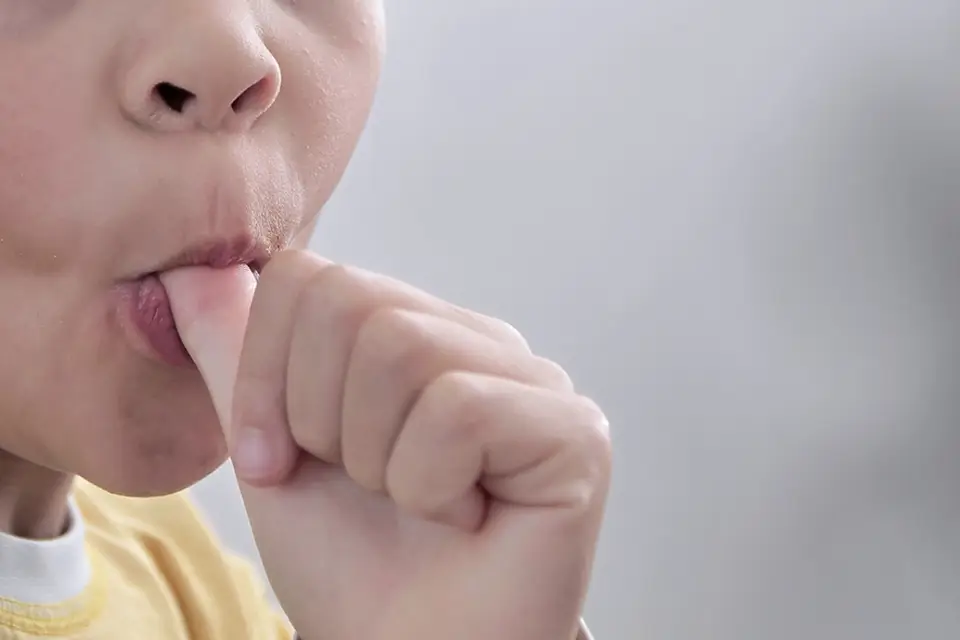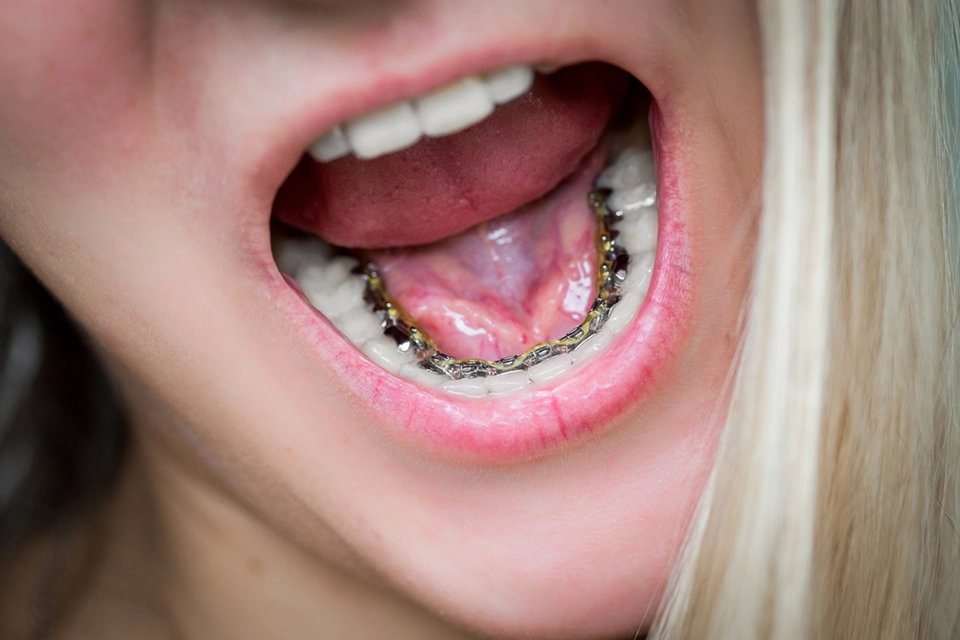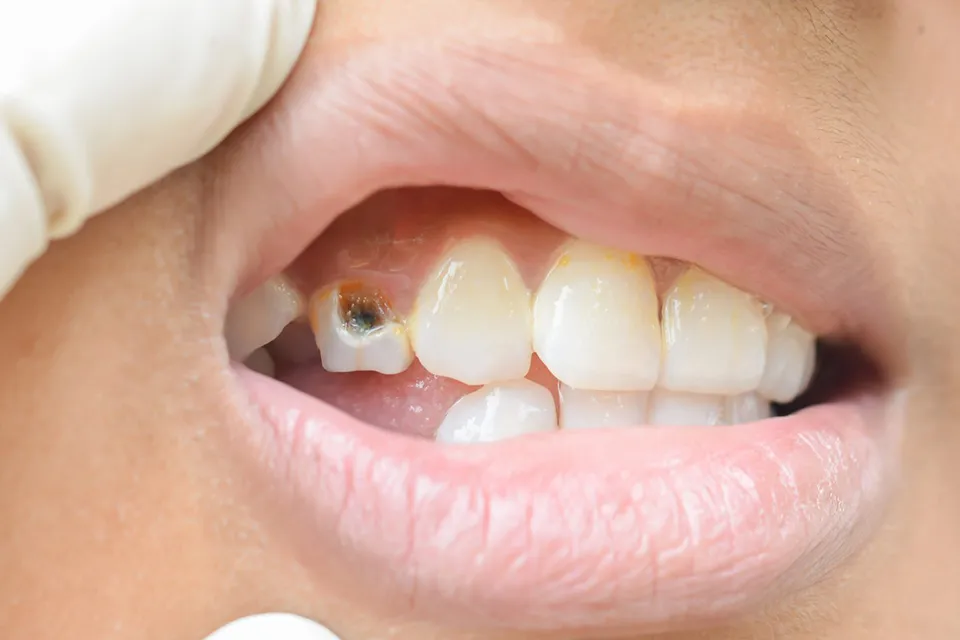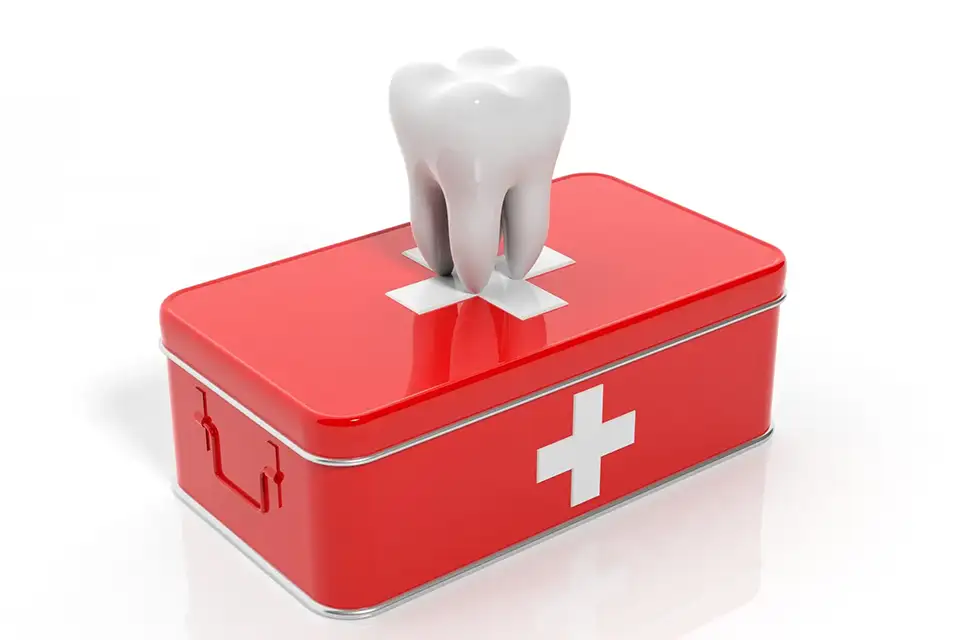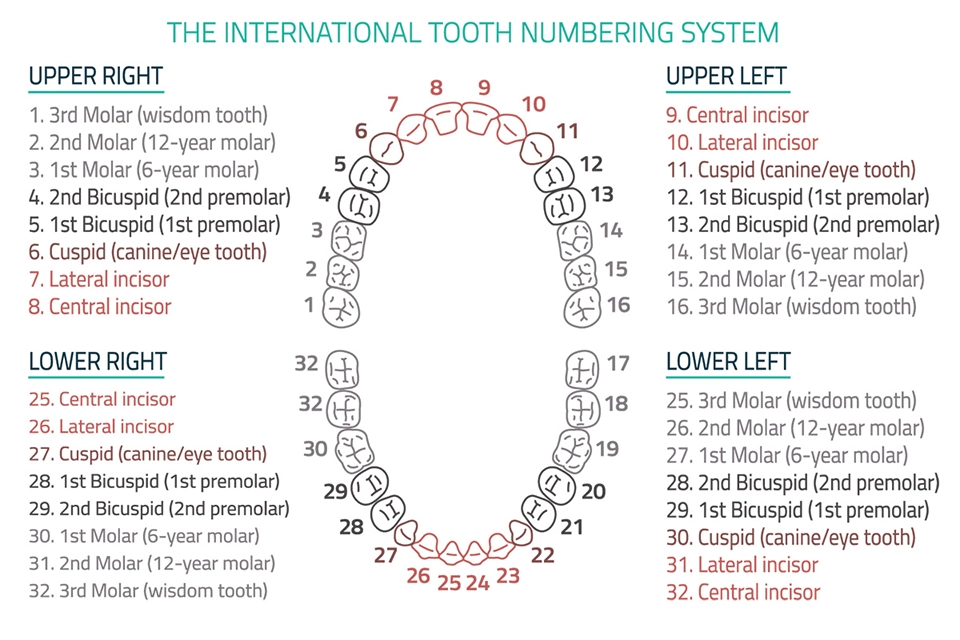Understanding the teeth numbers and names is not just a matter of curiosity but a crucial aspect of maintaining good oral health. Whether visiting the dentist for a routine check-up, a specific treatment, or simply interested in your dental anatomy, this knowledge can significantly enhance your dental care experience. It facilitates accurate communication with dental professionals and empowers you to comprehend better any dental issues you may encounter. Furthermore, this blog post will delve into the intricacies of teeth numbers and names, focusing on the Universal Numbering System and the various types of teeth and their functions.
Dental Numbering Systems
The Universal Numbering System, the most commonly used method of identifying teeth numbers and names in the United States, is pivotal in effective communication with dental professionals. Moreover, this comprehensive and straightforward system enables dental professionals to accurately and promptly identify each tooth in a patient’s mouth, providing a sense of reassurance and confidence in your dental care.
For adults, the Universal Numbering System numbers teeth from 1 to 32. The numbering starts with the upper right third molar (sometimes known as the wisdom tooth), tooth number 1. Counting continues along the upper teeth until the upper left third molar, which is tooth number 16.
The numbering then transitions to the lower left third molar (tooth number 17) and continues to the lower right third molar (tooth number 32). In a systematic manner, this sequence encompasses all 32 adult teeth.
The Universal Numbering System is also used for children with 20 primary (or “baby”) teeth. These teeth are labeled from A to T, allowing easy identification and communication between dental professionals. Additionally, it starts with the upper right second primary molar (tooth A), and the sequence proceeds like the adult system, ending with the lower right second primary molar (tooth T).
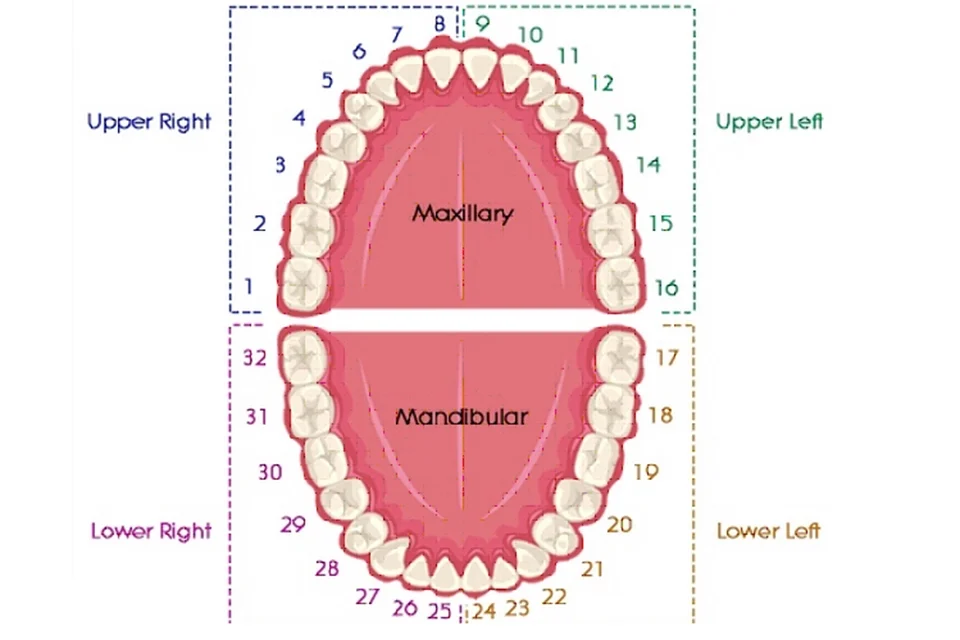
Names of Teeth and Their Functions
Incisors, canines, premolars, and molars are the four main types of human teeth. The functions and locations of each variety within the mouth are distinct.
1. Incisors
- Location: In the front of the mouth are eight teeth called incisors. The two sets of central and lateral incisors are on top, while the bottom consists of four teeth.
- Purpose: The primary use of incisors is to slice and cut food. In addition, their sharp, thin edges make them great for biting into soft foods like fruits and vegetables. They also ensure the smile’s aesthetic appearance and are essential for speech articulation.
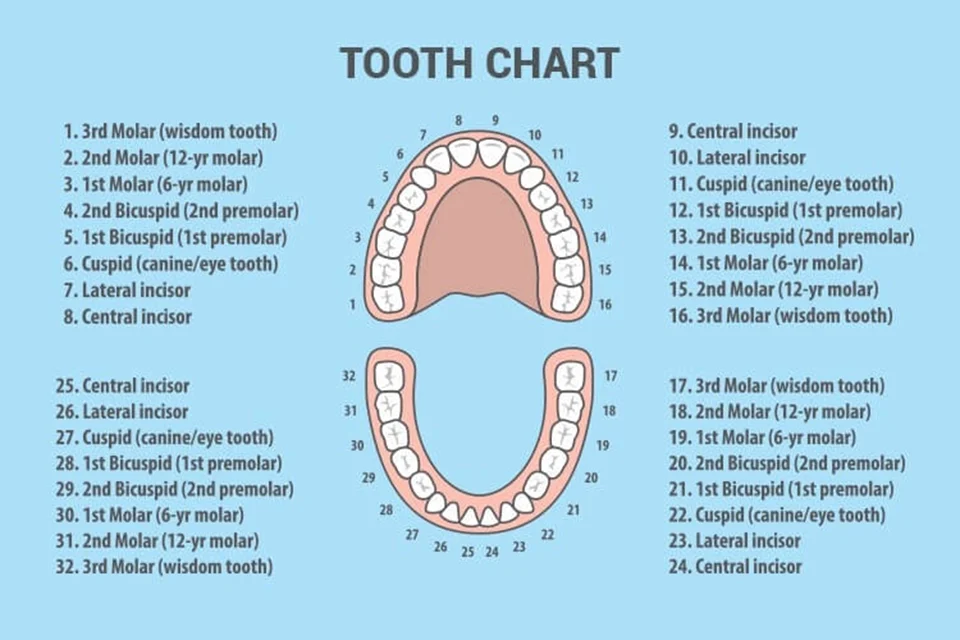
2. Canines
- Location: Their location is close to incisor teeth. There are four canines, one on each side of the upper and lower jaws.
- Function: Canines, or cuspids, are sharp teeth that rip and grip food. These teeth are among the strongest in the mouth due to the stability provided by their extended roots. Canines are necessary for optimal chewing and help guide the mouth into proper alignment when closing.
3. Premolars
- Location: Premolars, also known as bicuspids, are between the canines and molars. Adults usually have eight premolars, two on each side of their upper and lower jaws.
- Function: Premolars have a flat biting surface with ridges, making them excellent for crushing and grinding food. Moreover, they play a critical role in the digestive process by breaking down food into smaller, more manageable pieces, facilitating food transition from the canines to the molars.
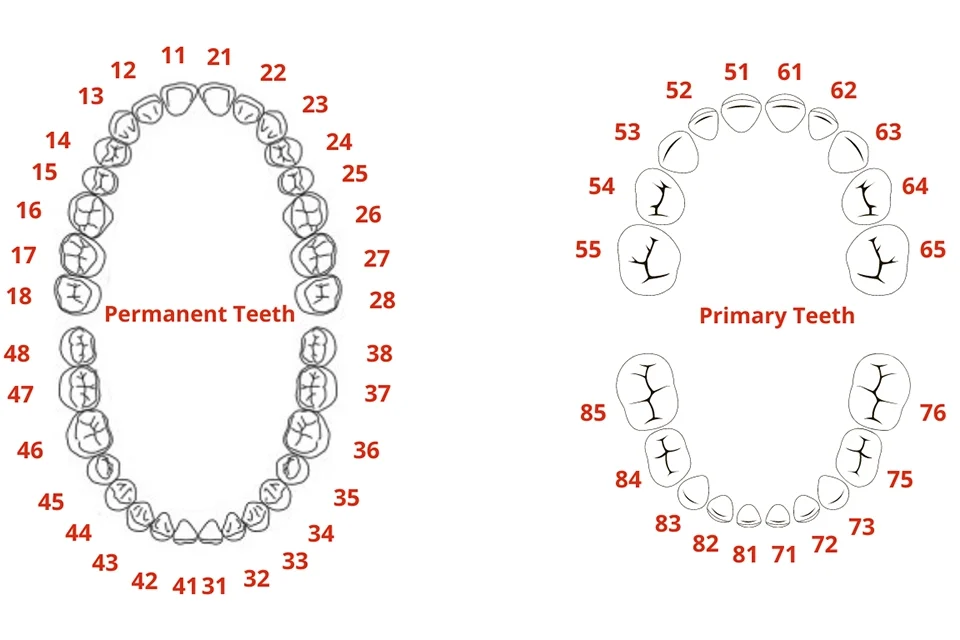
4. Molars
- Location: The molars are located in the back area of the mouth. There are six molars on top (including wisdom teeth) and six on bottom.
- Function: Molars are the largest and strongest teeth, suited for grinding and chewing food. In order to guarantee proper digestion, their broad, flat surfaces are highly effective in breaking down hard and fibrous foods. The first and second molars are the primary grinding teeth. Moreover, space or alignment issues frequently necessitate the removal of the third molars or wisdom teeth.
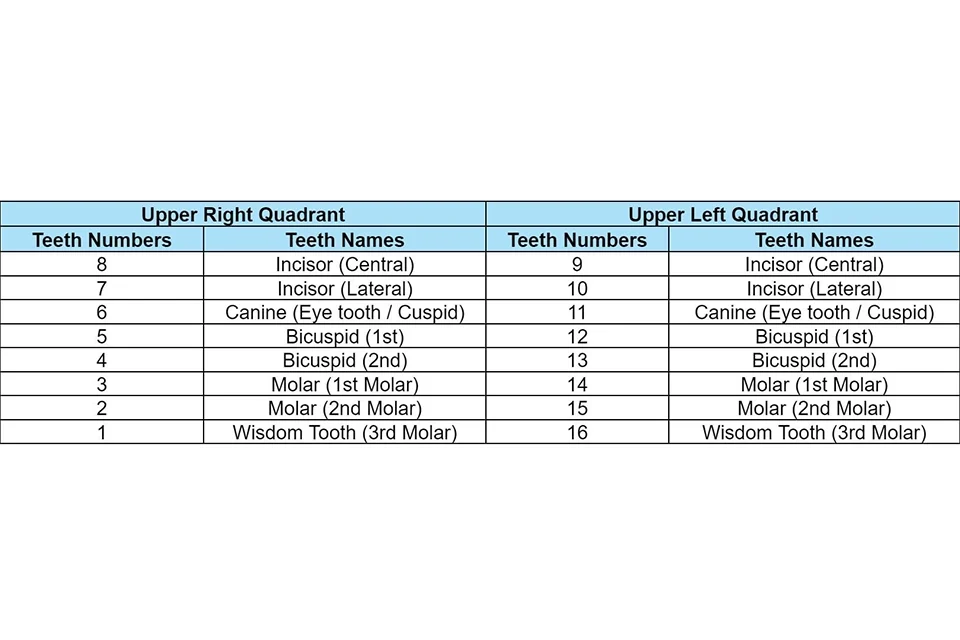
Understanding your teeth’ numbers and names is fundamental to maintaining good dental health. The Universal Numbering System facilitates effective communication with dental professionals and provides a distinct and standardized method for identifying each tooth. Furthermore, knowing the many types of teeth—incisors, canines, premolars, and molars—and their specific functions by learning about teeth numbers and names will help you understand the complexity of your dental anatomy and the significance of each tooth in your oral health.
At Zara Dental in Houston, Texas, we are committed to providing you with the information and care you require regarding your teeth’ numbers and names to maintain your smile healthy and vibrant. Whether you have questions about your teeth or need to make an appointment, our team can help you immediately. Whether you have questions about your teeth or need to make an appointment, our team can help you immediately.

